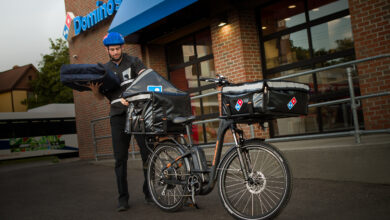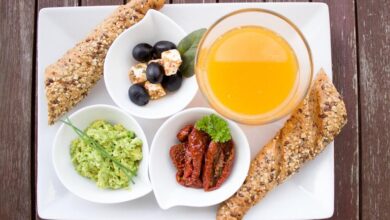Portion Control – Practical Tips for Measuring and Eating Right

Society may be eating more than ever, but with a little know-how—and practice—it’s easy to reign in dietary habits and achieve healthy, sustainable results. It doesn’t even require a fancy measuring device.
Use Smaller Plates And Bowls.
When dieting, everyone gets told to “watch their portions!” by well-meaning friends and family. This is great advice because food portions differ in serving sizes and can directly affect how much an individual eats during meals. But how to measure food portions?
Using smaller plates and bowls can help. People often base their portions on what is on their plates, so they tend to eat more food when using larger dinnerware. On the other hand, when they use smaller plates and bowls, they eat less food.
Eat Slowly
A person practicing portion control may use various methods to plan and manage their calories, such as using smaller dinnerware or measuring food. However, a person also must consider their eating habits. Eating slowly and without digital distraction can help a person eat more mindfully and acknowledge hunger cues and the satisfaction of their meal.
In addition, it can be helpful to drink water before a meal. This may be useful for people trying to manage their appetite and maintain a healthy weight. However, it’s important to remember that portion control is not about deprivation or hunger and should be a part of an overall healthy lifestyle.
Take Smaller Servings
As any fitness enthusiast knows, the amount of food you eat is just as important as the types of foods you consume. This is why portion control is vital to any healthy eating plan. Large portions can reduce your dietary balance and sabotage your weight loss goals.
However, it’s not always practical to whip out a food scale or measuring cups when you sit down for a meal. Luckily, you can use visual cues to estimate the size of your servings without using any tools. For instance, one fruit serving is about the size of a tennis ball, and a medium pepper is roughly the same size as a baseball. Eventually, these visual cues will become familiar to you, and you won’t have to think about measuring your food servings each time you eat.
Pre-Portion Snacks
Understanding portions can be difficult in a world of supersized meals and all-you-can-eat buffets. Measuring cups, spoons, and food scales can help you estimate your portion sizes accurately. Over time, this can help you manage hunger cues and support your weight loss goals.
People may snack for various reasons, including hunger, a nutrient boost, or a treat. Whether it’s healthy or not, eating too many calories can lead to unwanted weight gain.
If you want to control your snacking, consider dividing your favorite snacks into small servings ahead of time. That way, when you’re hungry or bored, you’ll be less likely to eat the entire bag or box!
Don’t Eat Directly From The Package.
Portion control is crucial in developing and maintaining healthy eating habits and weight loss goals. This concept is not about depriving yourself of food or limiting certain foods but rather finding a balance that fits your lifestyle and calorie needs.
Remember that a serving size is a standardized amount of food, while a portion size is the amount you choose to eat. Refer to the Nutrition Facts label on your food to help you better understand the differences between serving and portion sizes.
Avoid snacking directly from the package to prevent mindless overeating. Instead, try to eat the food from a plate or bowl to create awareness of portion sizes and develop healthier eating habits.



